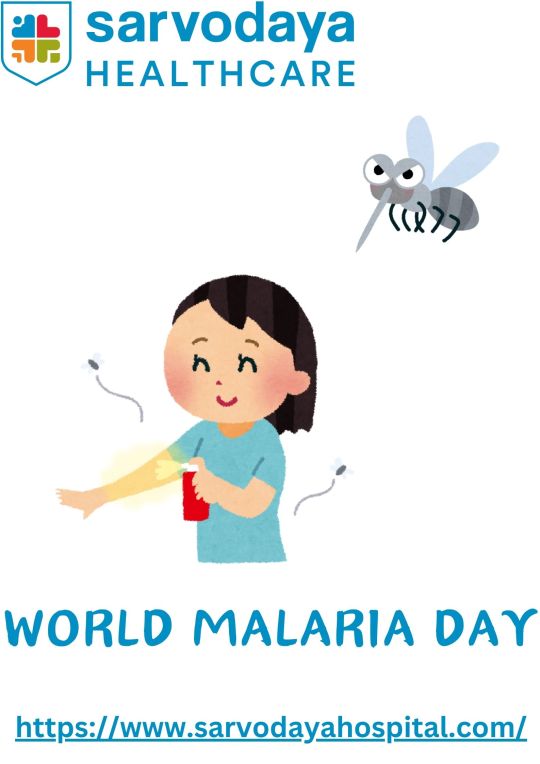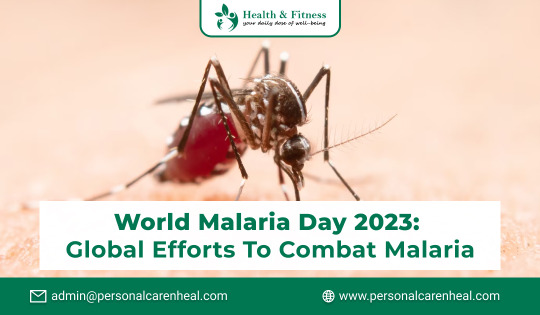#MALARIA SYMPTOMS
Explore tagged Tumblr posts
Text
0 notes
Text
youtube
0 notes
Text
Managing Malaria in Pregnancy: Protecting Mother and Baby
Pregnancy is a joyous time, but in malaria-endemic regions, it can be overshadowed by the risk of this mosquito-borne disease. Malaria poses serious risks to both mother and baby, making it a significant public health issue. With around 200 million global cases annually and India heavily affected, understanding and managing malaria during pregnancy is crucial, especially in high-risk areas.
Visit Website:
https://toneop.com/blog/malaria-in-pregnancy
0 notes
Text
#malaria#malaria treatment#malaria diagnosis#malaria symptoms#malaria disease#malaria testing#diagnosis of malaria
0 notes
Text

World malaria day is celebrated to spread awareness about malaria so that we keep our places clean and prevent malaria. Mosquitoes are born just because of dirty places so that's why we should clean our places. If you have malaria or fever just visit sarvodaya hospital for your health.
#World malaria day#malaria#fever#MALARIACARE#MALARIA MEDICINE#MALARIA SYMPTOMS#MALARIA TREATMENT#MALARIA TIPS#MALARIA FOOD#PREVENT MALARIA
0 notes
Text
The Vital Need For Distinguishing Between Dengue, Chikungunya, Malaria, And Typhoid Fevers
In the realm of infectious diseases, few challenges are as daunting as distinguishing between fevers with similar symptoms but vastly different treatments and consequences. Dengue, Chikungunya, Malaria, and Typhoid Fevers are four such illnesses that share overlapping symptoms, making accurate diagnosis crucial for appropriate medical intervention. This comprehensive guide will not only help you understand the distinctive features of each of these fevers but also emphasize the importance of distinguishing between them for effective healthcare management.
Know more
#Dengue Fever#Chikungunya Fever#Malaria Symptoms#Typhoid Fever Diagnosis#Accurate Diagnosis#Infectious Diseases#Medical Differentiation#Public Health Importance#Fever Identification#Healthcare Management#online doctor consultation#doctor consultation#online consultation
0 notes
Text

11 Most Common Signs And Symptoms Of Malaria Fever at Livlong
Check out the most common signs and symptoms of malaria you should know. Read this blog for more info on the malaria symptoms and treatment at Livlong now!
#malaria symptoms#malaria symptoms and treatment#signs and symptoms of malaria#symptoms of malaria fever#signs of malaria#types of malaria and their symptoms
0 notes
Text

11 Most Common Signs And Symptoms Of Malaria Fever at Livlong
Check out the most common signs and symptoms of malaria you should know. Read this blog for more info on the malaria symptoms and treatment at Livlong now!
#malaria symptoms#malaria symptoms and treatment#signs and symptoms of malaria#symptoms of malaria fever#signs of malaria#types of malaria and their symptoms
0 notes
Text
#Malaria#Malaria Treatment#Malaria Prevention#Malaria Symptoms#healthcare#healthcare blog#kauvery hospital
0 notes
Text
I've had some kind of insane cyclical cold since Christmas and it's decimating me again. send me silly little things to draw if u want
#I think i could sit and draw but my brain is mush so I don't know whaaattt#idk how the symptoms keep coming back how do I have a fever AGAIN#what is this the malaria of colds??#anyway
3 notes
·
View notes
Text
MALARIA
Malaria, is a disease caused by plasmodium parasite, which is transmitted by the bite of infected mosquitoes. If left untreated; it could be fetal _ resulting in severe complications and even death. Especially in malnourished children, children under the age of 5, pregnant women, and it also causes miscarriages. A medical diagnosis is required, to ascertain that someone has malaria. Therefore,…

View On WordPress
0 notes
Text
World Malaria Day 2023: Global Efforts to Combat Malaria
World Malaria Day is observed annually on April 25th to raise awareness about the global efforts to control malaria, a life-threatening disease caused by parasites transmitted to humans through the bites of infected female Anopheles mosquitoes. The day provides an opportunity to highlight the need for continued investment and political commitment to combat malaria and to reduce the burden of this disease on vulnerable populations worldwide. For more Information read our Blog
Blog Link: https://personalcarenheal.com/world-malaria-day-2023-global-efforts-to-combat-malaria/

#personalcarenheal#What are the Symptoms of Malaria?#What is Malaria and What Causes Malaria?#Preventive Measures of Malaria Disease
0 notes
Text
Pairing frogs and toads together might conjure memories of Arnold Lobel’s beloved characters — dressed to the nines in caramel coats and polyester — biking off toward adventure.
But in the animal world, frogs and toads on nearly every continent are facing a much more harrowing adventure: a decades-long fight against a mysterious fungal virus that has afflicted over 500 amphibian species.
Since the 1990s, scientists estimate that the chytridiomycosis disease caused by the fungal pathogen Bd (Batrachochytrium dendrobatidis) has led to the extinction of 90 amphibians. One of the lost species includes the Panamanian golden frog, which hasn’t been spotted in the wild since 2009.
Fortunately, a new research study has finally pinpointed the virus that has been infecting fungal genomes for decades.
“Bd is a generalist pathogen and is associated with the decline of over 500 amphibian species…here, we describe the discovery of a novel DNA mycovirus of Bd,” wrote Mark Yacoub — the lead author of the study and a microbiology doctoral student at the University of California, Riverside.
In an interview with UC Riverside News, Yacoub said that he and microbiology professor Jason Stajich observed the viral genome while studying the broader population genetics of mycovirus (viruses of fungi).
The discovery will undoubtedly have monumental impacts on future amphibian conservation efforts. This includes the possible launching of new research studies into fungal species strains, the practice of cloning and observing spores, and engineering a solution to the virus.
But Yacoub cautioned that this is only the beginning.
“We don’t know how the virus infects the fungus, how it gets into the cells,” Yacoub said. “If we’re going to engineer the virus to help amphibians, we need answers to questions like these.”
Still, as scientists strengthen conservation efforts to save frogs and toads (and salamanders too!) they also appear to be saving themselves. Yacoub pointed out several amphibian species around the world have begun exhibiting resistance to Bd.
“Like with COVID, there is a slow buildup of immunity,” Yacoub explained. “We are hoping to assist nature in taking its course.”

Pictured: A Golden poison frog — one of the many species endangered by chytridiomycosis — in captivity.
Why are frogs and toads so important?
From the get go, every amphibian species plays an important role in their local ecosystem. Not only are they prey for a slew of animals like lizards, snakes, otters, birds, and more, but in an eat-or-be-eaten world, frogs and toads benefit the food chain by doing both.
Even freshly hatched tadpoles — no bigger than a button — can reduce contamination in their surrounding pond water by nibbling on algae blooms.
As they grow bigger (and leggier), amphibians snack on whatever insect comes their way, greatly reducing the population of harmful pests and making a considerable dent in the transmission malaria, dengue, and Zika fever by eating mosquito larvae.
��Frogs control bad insects, crop pests, and mosquitoes,” Yacoub said. “If their populations all over the world collapse, it could be devastating.”
Yacoub also pointed out that amphibians are the “canary in the coal mine of climate change,” because they are an indicator species. Frogs and toads have permeable skin, making them sensitive to changes in their environment, and they also rely on freshwater.
When amphibians vanish from an ecosystem, it’s a symptom of greater environmental issues...
Herpetologist Maureen Donnelly echoed Yacoub’s sentiments in an interview with Phys Org, noting that when it comes to food chains, biodiversity, and environmental impact, the role of frogs and toads should not be overlooked.
“Conservation must be a global team effort,” Donnelly said. “We are the stewards of the planet and are responsible for all living creatures.”
-via GoodGoodGood, April 22, 2024
#frog#frogs#toads#frogs and toads#conservation#biodiversity#herpetology#mycology#fungi#endangered species#extinction#ecosystems#climate change#environment#biology#environmental science#ecology#good news#hope#frogblr#frog blogging
354 notes
·
View notes
Text

Symptoms of Malaria in Pregnancy
Symptoms of malaria during pregnancy include fever, chills, headache, nausea, vomiting, and muscle pain. It can also lead to more serious issues like anemia and complications for both the mother and baby.
Read More:
https://toneop.com/blog/malaria-in-pregnancy
0 notes
Note
I have a question regarding mosquitos/blood-consuming arthropods in general
When they pick up, say, West Nile virus or Malaria, are they just carriers or do they get actual infections/experience symptoms of the illness?
It depends on the pathogen, but many of them have at least a subtle impact on the host for their own benefit, and the one we know best about is what bubonic does to fleas. These days it's believed the "black death" was spread between humans by lice more than fleas, but fleas do get it, and in the body of a flea the bacterium actually fills up their whole digestive system so they can barely fit any food in their gut.
This keeps the flea constantly on the brink of starving to death, so it's locked into feeding behavior. It can't drink enough blood to feel satisfied and just keeps on looking for things to bite, whereas a satiated flea would take long breaks between meals :(
We also know that malaria weakens the cell walls of mosquitoes and eventually kills them, and unfortunately insects don't have quite the kind of immune system that we do, or mosquitoes would more often destroy the malaria parasites and become immune to them over time. Fortunately that doesn't mean their bodies don't respond at all; there's evidence that they could get help from bacteria to combat malaria infection!
276 notes
·
View notes
Note
Post-viral fatigue: When was it first officially recognized as A Thing? Was it unofficially observed much before then? What did the early documentation of it in medical literature/practice look like? How has our understanding of it evolved?
For this, since it is about history, I'm going to be talking mostly about our understanding of post-viral fatigue syndrome in a pre-covid context.
I have also decided to use sources describing what would later be termed ME/CFS. While viruses are only one trigger for ME/CFS, early reports tended to notice that ME/CFS clustered in outbreaks, which speaks to a viral, bacterial, or parasite trigger (for example, an outbreak of a viral illness happens, then just afterwards, an ME/CFS or post-viral syndrome outbreak does).
Finally, it is important to note that viruses are not the only infectious agent that can cause a fatigue syndrome. Bacteria (particularly strep) and even parasites (most notably giardia and malaria) have been known to cause it. As this is a history post, it generally will not be possible to differentiate the cause of any given outbreak, so I'm kind of lumping them in together.
------------------------
Let's begin:
Between 1860 and 1880, a new disease arrived on the scene. It was called neurasthenia, and it was described:
Neurasthenia is a condition of nervous exhaustion, characterised by undue fatigue on slightest exertion, both physical and mental, with which are associated symptoms of abnormal functioning, mainly referable to disorders of the vegetative nervous system. The chief symptoms are headache, gastrointestinal disturbances, and subjective sensations of all kinds.
It probably wasn't actually new, but instead first recognized here due to the recent industrial revolution and change in work patterns. It was considered to strike upper-class men (as a consequence of their hard mental work) specifically, and thought not to strike the lower classes, women, or racial minorities (who surely never engaged in such work).
Between 1880 and 1900, in the UK, explanation after explanation was posited as the reason for the illness. It was due to overwork, or underwork. Due to a lack of electrical energy. Due to a physical insult like an infection or metabolic disturbance. Due to the law of thermodynamics playing out in the body. Basically, if the scientific community found a new cool theory, it was applied to explain neurasthenia. None of these, however, were able to be definitively proven with the technology of the time.
One thing, however, was consistent- the treatment. Like a number of other illnesses, it was sending someone to a retreat, rest home, or other place where they could experience physical and mental rest. This is also the first time "chronic fatigue" was used in the literature. Based on what we know today, this was probably a good option.
By the early 20th century, unable to find an explanation that stuck, however, physicians threw their hands up. It was all just a weird form of melancholia, they said. It is important to note here that psychiatry and neurology would not become distinct fields until after WWII. So it was mostly neurologists saying "hey, we can't figure out what causes this, so we're going to lump it in with another thing we can't figure out the cause of that also makes people stay in bed all the time."
This was followed very swiftly by other physicians, several of whom had neurasthenia themselves, advocating for it to continue to be considered it's own separate neurological condition. Unfortunately, the melancholia label stuck, and the view of it as an upper class disease that only affected men quickly flipped to one that was only experienced by the lower classes and women.
Whether understood as physical, mental, or a combination, however, the early 1900s brought with it another explanation for the problem- febrile illness. It was noted that chronic fatigue syndromes frequently followed malaria, flu, and other illnesses that caused fever. This was not the first time this had been postulated, but it was the first time it attained widespread acceptance. The lack of persistence of the culprit (at the time bacteria or parasite), however, only lent more credibility to the idea that it was mental in nature, and it was largely forgotten about.
In 1934, a series of outbreaks of what was thought to be an abnormal form of polio struck around the world. Once it was differentiated, it would be named epidemic neuromyasthenia. This was seen as a brand new illness, not connected to neurasthenia.
By the 1950s, the term had changed to "benign myalgic encephalomyelitis", which was chosen due to
the absent mortality, the severe muscular pains, the evidence of parenchymal damage to the nervous system, and the presumed inflammatory nature of the disorder,
as described in a 1959 paper on the subject. It was recognized that the disease came in both epidemic and sporadic cases, but the scientific community wasn't entirely sure what caused it. Still, the number of papers about it suggested they were looking (unfortunately, most of these papers are not available, even in abstract form).
The next problem happened in 1970. Two psychiatrists named McEvedy and Beard wrote a paper that analyzed an outbreak that occurred in 1955, proclaimed it a case of mass hysteria without talking to any of the patients, and retroactively concluded that all previous outbreaks dating back to 1934 had also been mass hysteria. Over the next 8 years, there were many papers vehemently refuting this claim, by at least 5 different authors that I could find.
Unfortunately, instead of the rebuttals cementing McEvedy and Beard as not knowing what they were talking about, it created a deep rift in the scientific community: did the disease belong to psychiatrists, neurologists, both, or someone else entirely?
People working on the physical end in the 1980s pointed to high rates of viral titers for specific viruses, circulating immune complexes, muscle biopsies showing necrosis, abnormal jitter potentials, and abnormally early acid production during exercise, among other things. Basically, there's something wrong with how the immune system is working, and also something very wrong with the physiology of the muscles.
People working on the mental end pointed to mass hysteria and high rates of anxiety, depression, and emotional liability in people with myalgic encephalomyelitis, combined with a then relatively new understanding that mental illness sometimes does wonky things with the immune system.
Note that, for the mental end of things, some of the sources cited in these papers are exceptionally old for scientific papers, like, going back to neurasthenia days and the original 1900s explanations of neurasthenia as melancholia.
Because the two camps couldn't get along (I have no proof, but I know neurology and psychiatry fought like cats and dogs for long swaths of the 20th century, so it honestly might have been a professional scrap that made this illness so fraught), "post-viral syndrome", and later "post-infectious fatigue syndrome" were coined because they didn't specifically point to physical or mental being the primary reason for the syndrome.
And this argument continued into the 2020s, and in some cases until today. The COVID-19 pandemic did finally settle it largely into a physical illness with some psychological features (rather than a psychological illness with some physical features). But it can still be exceptionally difficult to get diagnosed and correctly treated depending on where a person is and what doctor they have.
In conclusion, the history of post-infectious fatigue syndrome has gone through many names and many phases, and there was a lot to the story I wish I could have covered in this post, but it was already really long. Hopefully this gives you some understanding of the social and scientific history of this syndrome.
41 notes
·
View notes